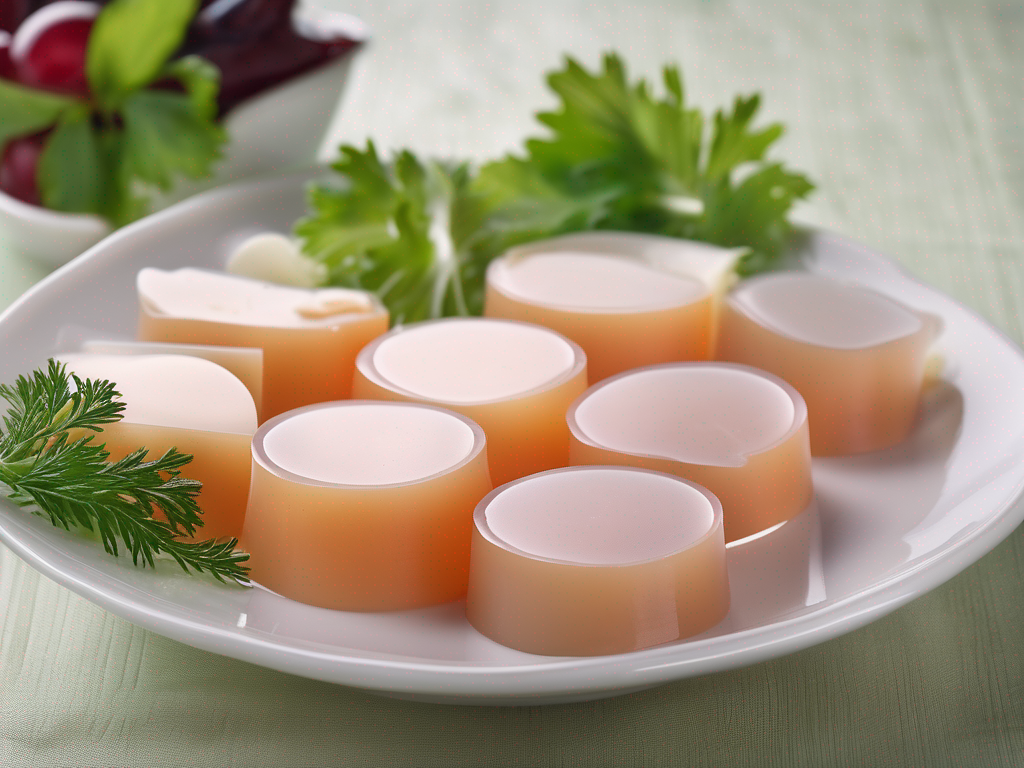
Properly Storing Agar to Extend Its Shelf-Life
Get Your Free Food Safety Cheat Sheet
30 most common foods with instant answers. Print it and stick it on your fridge—completely free!
Properly Storing Agar to Extend Its Shelf-Life
Agar, a versatile ingredient derived from seaweed, is widely used in the culinary world for its gelling properties. Whether you are a professional chef or a home cook experimenting with molecular gastronomy, proper storage of agar is crucial to maintain its quality and shelf-life. In this guide, we will explore effective methods to store agar to ensure its longevity and usability. (Agar)
Understanding Agar: A Brief Overview
Agar, also known as agar-agar, is a natural gelling agent extracted from certain types of seaweed, primarily red algae. It is commonly used in various food applications, including desserts, confectionery, and as a vegetarian alternative to gelatin. Agar sets more firmly than gelatin and remains stable at higher temperatures, making it a preferred choice in many recipes.
For more information on the benefits and uses of agar, you can refer to our detailed guide on agar. (Agar)
Factors Affecting Agar Shelf-Life
Before delving into storage methods, it is essential to understand the factors that can impact the shelf-life of agar. Proper storage practices can help mitigate these factors and prolong the usability of agar. Some key factors to consider include:
1. Moisture Content
Excessive moisture can cause agar to degrade and lose its gelling properties. It is crucial to store agar in a dry environment to prevent moisture absorption.
2. Exposure to Light
Agar is sensitive to light exposure, especially direct sunlight, which can lead to degradation. Storing agar in a dark or opaque container can help preserve its quality.
3. Temperature Fluctuations
Agar should be stored at a consistent temperature to prevent it from melting or becoming too brittle. Avoid storing agar near heat sources or in fluctuating temperatures.
4. Contamination
Contamination from airborne particles or other food products can compromise the quality of agar. Proper sealing and storage practices can help prevent contamination.
Best Practices for Storing Agar
To extend the shelf-life of agar and maintain its quality, follow these best practices for storage:
1. Choose the Right Container
Opt for airtight containers made of glass or food-grade plastic to store agar. Avoid using metal containers as they can react with agar over time.
2. Store in a Cool, Dark Place
Place the sealed container of agar in a cool, dark pantry or cupboard away from heat sources and direct sunlight. A temperature-controlled environment will help preserve the agar's integrity.
3. Keep Away from Moisture
Ensure that the storage area is dry and free from moisture. Consider adding a desiccant packet to absorb any excess moisture and maintain the quality of agar.
4. Label and Date the Container
To track the shelf-life of agar, label the container with the date of purchase or storage. Use older agar first to prevent wastage and ensure freshness.
Tips for Handling Agar Safely
Apart from storage, proper handling of agar is essential to prevent contamination and ensure food safety. Follow these tips for safe handling of agar:
1. Wash Hands Thoroughly
Before handling agar or preparing recipes with agar, wash your hands thoroughly with soap and water to prevent contamination.
2. Use Clean Utensils
Ensure that all utensils, containers, and equipment used with agar are clean and dry to maintain hygiene and prevent bacterial growth.
3. Follow Recipe Instructions
Adhere to recipe instructions when using agar to achieve the desired texture and consistency. Avoid altering the agar-to-liquid ratio as it can affect the final result.
4. Store Prepared Agar Safely
If you have prepared agar-based dishes or desserts, store them in airtight containers in the refrigerator to prevent spoilage and maintain freshness.
Conclusion
Proper storage and handling of agar are essential steps to extend its shelf-life and maintain its quality for culinary applications. By following the best practices outlined in this guide, you can ensure that your agar remains fresh, effective, and safe for consumption. Incorporate these tips into your kitchen routine to enjoy the benefits of agar in your culinary creations.

Authoritative Food Safety References
These agencies and university labs inform every tip and health precaution we publish.
USDA FoodKeeper – Cold Storage Guidelines
Official refrigerator, freezer, and pantry timelines maintained by the U.S. Department of Agriculture.
Visit USDA FoodKeeperFDA Produce Safety Rule & Grower Guidance
Field-to-fridge handling practices that prevent contamination of fruits, vegetables, and leafy greens.
Visit FDA Produce SafetyCDC Foodborne Illness Prevention Hub
Surveillance-backed guidance on pathogens, symptoms, and steps to reduce foodborne illness risk.
Visit CDC Food SafetyUC Davis Postharvest Technology Center
University research detailing optimal storage atmospheres for produce after harvest.
Visit UC Davis PostharvestPenn State Extension – Home Food Preservation & Safety
Peer-reviewed extension bulletins on safe canning, chilling, and reheating practices.
Visit Penn State ExtensionHow should I store agar to extend its shelf-life?
Can agar be frozen to prolong its freshness?
How long can agar be stored before it expires?
Can agar be stored in the refrigerator?
How can I tell if agar has gone bad?
Get Your Free Food Safety Cheat Sheet
30 most common foods with instant answers. Print it and stick it on your fridge—completely free! Want more? Upgrade to the complete guide with 70+ foods.
Scan your food directly and get instant safety info using our AI-powered camera feature.